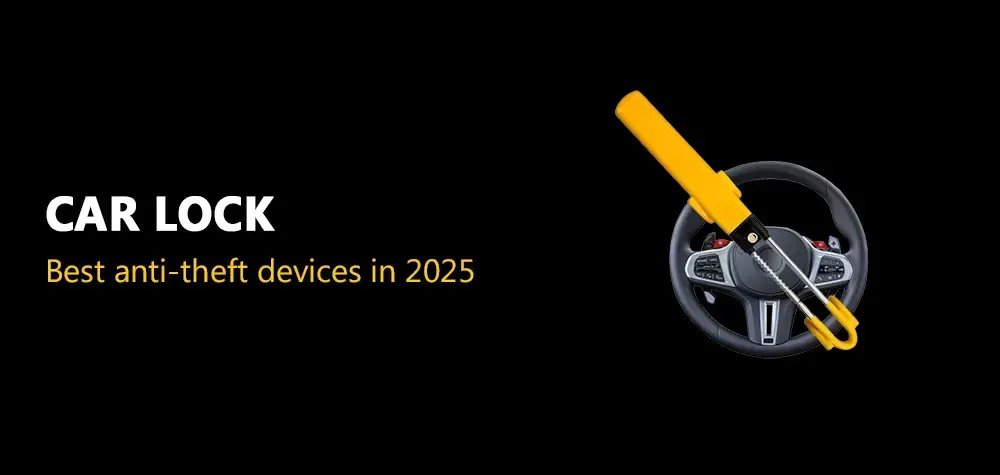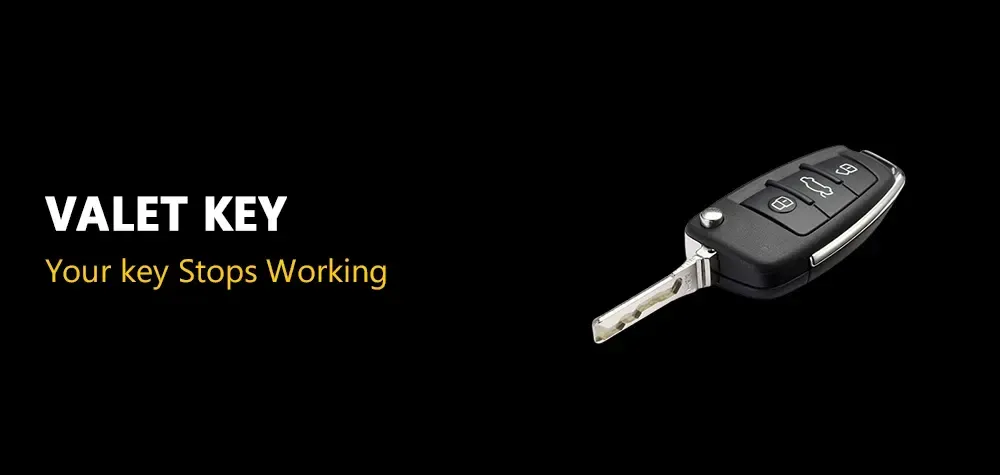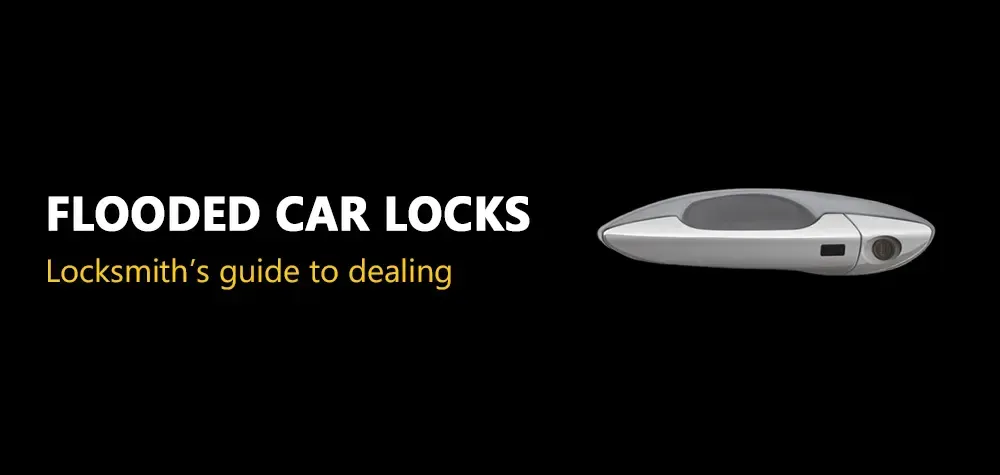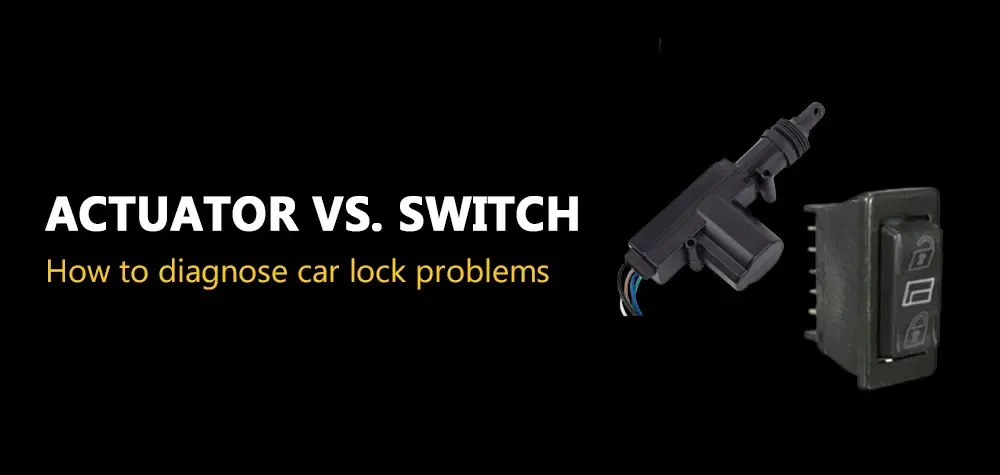The Best Locking Mailboxes to Ensure No One Steals Your Stuff
Let’s face it—mail theft is a real problem. Thieves are out there looking for anything they can get their hands on, from credit card statements to packages. And if you’re still using a regular, unprotected mailbox, you’re basically leaving an open invitation for criminals to help themselves. A locking mailbox is the simplest and most effective way to keep your mail—and your identity—safe.
The truth? If you’re not using a locking mailbox, you’re asking for trouble. Whether it's packages getting stolen or sensitive documents being rifled through, it’s just not worth the risk. Protect your stuff with a secure locking mailbox, and you’ll never have to worry about your mail being taken again. Simple as that.
How to Replace a Mailbox Lock?
Types of Locking Mailboxes
1. Post-Mount Locking Mailboxes
Post-mount locking mailboxes are the classic choice for homeowners with a private post. These are typically installed at the end of a driveway or near your front yard, offering a traditional design with a secure locking mechanism. They’re ideal for suburban or rural areas where your mailbox might be farther from the house. The benefits? These mailboxes are built to last, with large capacities for holding multiple letters and parcels, and they provide top-notch security to keep your mail safe from thieves.
2. Wall-Mount Locking Mailboxes
For those living in urban settings or apartments, wall-mount locking mailboxes are a game-changer. These mailboxes are mounted on a wall, typically near the entrance or front door, saving space while still offering security. They’re perfect for tight spaces where a post-mount wouldn’t work. Besides the convenience, these mailboxes come in sleek designs that add a modern touch to your home. Whether you’re in a crowded neighborhood or a small apartment complex, they provide a compact and stylish way to keep your mail protected.
3. Curbside Locking Mailboxes
Curbside locking mailboxes are a great solution for homeowners who need a mailbox that’s easily accessible to both the mail carrier and the homeowner. These are usually installed at the curbside, offering heavy-duty locks and weather-resistant designs to keep your mail safe from both thieves and the elements. The biggest benefit is the combination of convenience and security—your mail carrier can deliver right to the box, and you don’t have to worry about theft. These mailboxes are perfect for homeowners who want easy access without compromising security.
4. Decorative Locking Mailboxes
If you’re looking for a mailbox that combines security with style, decorative locking mailboxes are the way to go. These mailboxes come in a variety of designs, from traditional to modern, and are perfect for homeowners who want to add some curb appeal while keeping their mail safe. While they look great, they don’t compromise on security, featuring sturdy locks and weatherproof features to ensure your mail is protected. Ideal for those who care about both aesthetics and security, these mailboxes let you protect your mail without sacrificing the look of your property.
Key Features to Look for in a Locking Mailbox
When choosing a locking mailbox, there are a few key features that can make all the difference in keeping your mail safe and secure.
1. Durability and Build Quality
A locking mailbox needs to be tough enough to withstand the elements and any attempted break-ins. Look for mailboxes made from high-quality materials like galvanized steel or heavy-duty aluminum, which resist rust and corrosion. Anti-theft features like reinforced doors and tamper-resistant designs are a must to ensure the mailbox lasts and does its job effectively. You don’t want to invest in something that’s going to break down after a year or two.
2. Secure Locking Mechanism
The locking system is the most important part of the mailbox—if it’s easy to break into, then it’s not doing its job. Consider mailboxes with pick-resistant locks, cam locks, or combination locks. The more secure the lock, the harder it is for thieves to access your mail. Choose a system that provides the level of security you need, whether that’s a traditional keyed lock or a more advanced locking mechanism that can’t be easily tampered with.
3. Size and Capacity
Size matters when it comes to locking mailboxes. You want a mailbox that can hold all your mail—whether it’s just letters or larger parcels. Make sure the mailbox is spacious enough to accommodate everything you regularly receive. If you get packages often, look for a mailbox with a larger capacity or one that features a compartment designed for bigger items. No one wants a full mailbox with packages left sitting outside in the rain.
4. Weather Resistance
Your mailbox needs to stand up to the elements. Look for a mailbox with weatherproof features like rust-resistant finishes, UV-resistant coatings, and seals that keep rainwater out. If you live in an area with harsh winters or heavy rainfall, weather resistance is crucial to keep your mail dry and safe. A good weatherproof mailbox will prevent moisture from ruining your documents and keep your mailbox functioning well over time.
5. Easy Access and Convenience
While security is essential, you also need a mailbox that’s convenient for both you and the mail carrier. Make sure the mailbox is easy to open and close with a locking mechanism that’s not a hassle to use every day. Some mailboxes even offer larger mail slots or drop-down doors for easier access to your mail, especially when dealing with bigger parcels. Additionally, think about whether you prefer a post-mount or wall-mount design—this depends on your available space and how easy you want it to be for the mail carrier to deliver.
Top Locking Mailboxes for Security
When it comes to keeping your mail safe and secure, not all mailboxes are created equal. Below are some of the best locking mailboxes on the market that combine high security with durability and ease of use. Whether you need a mailbox for your suburban home or an urban apartment, these top-rated models will give you peace of mind.
1. Mail Boss 7506 Locking Security Mailbox
The Mail Boss 7506 is a heavy-duty locking mailbox known for its superior security features. Made from 12-gauge galvanized steel, it’s incredibly resistant to tampering, rust, and corrosion. The locking mechanism is a high-security, pick-resistant cam lock, which makes it almost impossible for anyone to break into. The Mail Boss is large enough to hold plenty of mail, including larger parcels, and has a weatherproof design that ensures your mail stays dry. If you’re serious about security, this is one of the toughest options available.
2. Gibraltar Mailboxes Stainless Steel Locking Mailbox
For those who want a sleek, modern look without sacrificing security, the Gibraltar Stainless Steel Locking Mailbox is a great choice. Its durable stainless steel construction is not only aesthetically pleasing but also resistant to rust and weather damage. The mailbox is designed with a secure, key-operated locking mechanism, ensuring your mail remains protected. The large capacity is ideal for both letters and small packages, and the mail slot is narrow enough to prevent easy access for thieves. It’s perfect for homeowners looking for a balance of style and security.
3. Architectural Mailboxes 6200-10 Keyed Locking Mailbox
This locking mailbox offers robust protection with a combination of heavy-duty steel construction and a tamper-resistant, heavy-duty lock. The Architectural Mailboxes 6200-10 is ideal for curbside installations and features a weather-resistant powder coating to prevent corrosion. It also includes a locking, front-access door, allowing easy retrieval of mail without compromising security. The wide mail slot fits standard-sized envelopes, and the spacious interior accommodates larger packages. It’s a solid, no-nonsense choice for homeowners who want a high-security mailbox.
4. American Posture Locking Mailbox
American Posture offers a line of well-crafted, secure locking mailboxes that prioritize both safety and style. Their designs are made from durable materials, including powder-coated steel and stainless steel options, to resist the elements and stand up to tampering attempts. The locking system is strong and offers both key and combination lock options, providing you with additional flexibility. The interior space is generous enough for both letters and small packages, and the mail slot is designed to prevent anyone from reaching inside. This brand is perfect for homeowners seeking an attractive yet highly secure mailbox.
5. Stealth Mailbox Locking Security Mailbox
The Stealth Mailbox offers advanced security features in a sleek, contemporary design. The mailbox features a high-security lock and a heavy-duty, tamper-proof door, making it nearly impossible for intruders to gain access. It’s designed with a 16-gauge galvanized steel body that’s both rust and weather-resistant, so your mailbox stays in top shape for years. The sleek, modern design fits well with most homes, and the added bonus of a large capacity means you can store everything from daily letters to packages without issue. If you want top-notch security in a minimalistic design, the Stealth Mailbox is a fantastic option.
How to Install a Locking Mailbox: Step-by-Step Guide
Installing a locking mailbox is straightforward, but doing it right can make a big difference in security and functionality. Follow this step-by-step guide to ensure your mailbox is properly set up and offers the best protection for your mail.\
1. Choose the Right Location
Before you start drilling or installing, decide where you want your mailbox. It should be easily accessible to the mail carrier but also in a spot where it’s safe from tampering. For curbside mailboxes, make sure it’s at least 41 to 45 inches above the ground to comply with USPS regulations. If you’re installing a wall-mounted mailbox, pick a location near the entrance or front door for easy access while still being secure.
2. Gather the Tools and Materials
Make sure you have all the necessary tools for installation. You’ll need a power drill, screwdriver, level, measuring tape, a wrench (if necessary), and, of course, the mailbox and mounting hardware. If you’re installing a post-mount mailbox, you may also need concrete for added stability, especially if you live in an area with high winds or heavy weather.
3. Mark the Mounting Points
Using a measuring tape and level, mark where you’ll place the mounting brackets on the post or wall. For post-mount mailboxes, you’ll want to make sure the mailbox is secure and level on the post, while wall-mounted models should be positioned at a height that’s easy for you to access and for the mail carrier to reach. Mark where the screws or bolts will go.
4. Drill Holes for Mounting
Drill pilot holes where you’ve marked for the mounting brackets or screws. If you’re mounting the mailbox on a post, ensure the holes are deep enough for the screws to go in firmly. For wall-mounted mailboxes, use anchors to ensure a secure hold if you're mounting it on drywall. For a sturdier installation, use masonry anchors if you're drilling into brick or concrete walls.
5. Secure the Mailbox
Once your holes are drilled, attach the mailbox to the post or wall by aligning the brackets with the holes. Use screws or bolts to fasten the mailbox securely, making sure it’s level. If you’re installing a post-mount mailbox, you may need to dig a hole, set the post in the ground, and pour concrete to ensure it stays upright in all weather conditions. Allow the concrete to set if you’re using it.
6. Test the Locking Mechanism
Once everything is installed, make sure the locking mechanism is working correctly. Check to ensure that the mailbox door opens and closes smoothly and that the lock is securely in place. If there are any issues with the lock or the functionality of the mailbox, address them before moving on to ensure your mailbox is fully secure.
7. Add Finishing Touches
Finally, if your mailbox comes with any finishing touches like a flag or decorative features, install those according to the manufacturer’s instructions. Double-check that your mailbox is stable, secure, and ready to use.
Why Professional Installation Might Be Worth It
While installing a locking mailbox yourself is possible, professional installation can provide added peace of mind. A professional will ensure that the mailbox is securely mounted, properly positioned, and correctly wired (if necessary). Plus, if you’re not comfortable with tools or drilling into concrete, hiring a professional saves time and effort. It’s an investment in both your mailbox’s security and your own convenience.
Maintenance Tips for Your Locking Mailbox
To ensure your locking mailbox continues to protect your mail year after year, regular maintenance is crucial. Here's a list of simple yet essential maintenance tips to keep it functioning properly.
1. Regularly Check the Lock Mechanism
Locks are the heart of your mailbox security, so you want to keep them in top shape. Regularly check the lock to make sure it’s not sticking, rusting, or showing signs of wear. Lubricate the lock with graphite or a silicone-based lubricant every few months to prevent rusting and ensure it operates smoothly. If you notice any issues with the lock, consider replacing it to maintain the security of your mailbox.
2. Inspect for Rust and Damage
Rust can quickly undermine the security and appearance of your mailbox. Regularly inspect your mailbox for any signs of corrosion, especially if it’s exposed to the elements. If you notice any rust spots, treat them immediately by sanding the area and applying a rust-resistant paint or finish. A well-maintained mailbox is not only more secure but also more aesthetically pleasing.
3. Clean the Mailbox Regularly
Over time, dirt, dust, and debris can accumulate in and around your mailbox. To keep it looking fresh and functional, clean it regularly with a damp cloth or soft brush. Avoid using harsh chemicals that might damage the paint or material. If your mailbox is exposed to heavy weather, you might need to clean it more frequently to remove leaves, dirt, or any buildup.
4. Ensure the Mailbox is Level
A mailbox that’s not level can lead to problems like improper door closure, which can be a security risk. Over time, the ground can shift or the mounting brackets may loosen, causing the mailbox to become misaligned. Check periodically to ensure it’s still positioned properly and make adjustments as needed. If it’s a post-mount mailbox, ensure the post is firmly in place, especially if you live in an area with high winds.
5. Check the Weatherproofing Features
If your mailbox has any weatherproofing features, such as seals or gaskets, make sure they’re in good condition. These elements help keep moisture out, ensuring your mail stays dry and your mailbox remains functional. Inspect the seals for any cracks, wear, or gaps that could allow rainwater to enter the mailbox. Replace weatherproofing components if necessary.
6. Tighten Loose Screws and Bolts
Over time, the screws and bolts holding the mailbox in place can loosen. Periodically check all fasteners to ensure they’re secure. If any screws or bolts are missing or loose, tighten them to prevent your mailbox from becoming unstable or easier to tamper with. For extra peace of mind, consider applying a thread-locking adhesive to screws that tend to loosen over time.
7. Maintain Accessibility
Keep the area around your mailbox clear of obstacles to ensure easy access for both you and the mail carrier. Trim any overgrown plants, bushes, or trees that might obstruct the mailbox. A clear path ensures you can easily retrieve your mail, and the mail carrier doesn’t have to struggle to deliver it.
When to Replace Your Locking Mailbox
While regular maintenance can extend the life of your mailbox, there will come a time when it needs to be replaced. Here are a few signs it’s time to invest in a new locking mailbox:
Severe rust or corrosion: If your mailbox is too rusted or corroded, it might no longer provide adequate protection.
Damaged lock mechanism: If the lock has become irreparable or no longer provides a secure fit, it’s time for a replacement.
Structural damage: If the mailbox is bent, dented, or otherwise compromised, it can be easier for thieves to break into.
Frequent tampering or break-ins: If your mailbox has been targeted repeatedly by thieves, a new, more secure model may be necessary to keep your mail safe.
How to Choose the Best Locking Mailbox for Your Home
Choosing the right locking mailbox for your home comes down to considering your specific needs: Do you need extra capacity, weather resistance, or a more secure lock? Assess your property type—whether you live in a suburban, urban, or rural area—as this will influence your options. Think about style too; a decorative locking mailbox can enhance your curb appeal, while a more robust, functional model prioritizes security. Make sure the mailbox meets USPS delivery guidelines and fits your installation space comfortably.
Installation Tips for Locking Mailboxes
- Always use a level to ensure proper alignment during installation.
- Check local postal regulations for correct height and positioning.
- Secure the mailbox with high-quality screws or bolts for added durability.
- For post-mount mailboxes, consider pouring concrete for a sturdy, weather-resistant base.
- Keep the mailbox accessible but out of direct line of sight for enhanced security.
Conclusion
A locking mailbox is an essential investment for securing your personal information and ensuring your mail stays safe from theft, weather, and wear. Whether you opt for a post-mount, wall-mount, or decorative model, the right mailbox can give you peace of mind while adding to the curb appeal of your property. By considering factors like capacity, style, and installation requirements, you can find the perfect mailbox for your home. Remember, proper installation and maintenance are key to ensuring your mailbox works effectively for years to come. If you need help choosing or installing a locking mailbox, Brothers Locksmith is here to offer expert advice and professional installation to keep your mail safe and secure.
Call Us Any Time!









